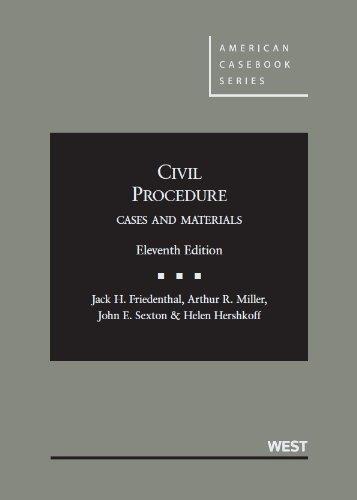1. Can Erickson be reconciled with Twombly and Iqbal? The Seventh Circuit, reversing the District Courts dismissal...
Question:
1. Can Erickson be reconciled with Twombly and Iqbal? The Seventh Circuit, reversing the District Court’s dismissal of a Fair Housing Act claim, has explained:
* * * Critically, * * * none of the three recent decisions [Twombly, Iqbal, and Erickson] *
* * cast any doubt on the validity of Rule 8 * * *. To the contrary: at all times it has said that it is interpreting Rule 8, not tossing it out the window. * * *
As one respected treatise put it in 2004, all that is necessary is that the claim for relief be stated with brevity, conciseness, and clarity…. [T]his portion of Rule 8 indicates that a basic objective of the rules is to avoid civil cases turning on technicalities and to require that the pleading discharge the function of giving the opposing party fair notice of the nature and basis or grounds of the pleader’s claim and a general indication of the type of litigation that is involved….
5 Wright & Miller, Federal Practice and Procedure: Civil 3d § 1215 at 165-173 (3d ed.
2004).
Nothing in the recent trio of cases has undermined these broad principles. * * * The Court was not engaged in a sub rosa campaign to reinstate the old fact-pleading system called for by the Field Code or even more modern codes. We know that because it said so in Erickson: “the statement need only give the defendant fair notice of what the … claim is and the grounds upon which it rests.” * * * Instead, the Court has called for more careful attention to be given to several key questions: what, exactly, does it take to give the opposing party “fair notice”; how much detail realistically can be given, and should be given, about the nature and basis or grounds of the claim; and in what way is the pleader expected to signal the type of litigation that is being put before the court?
Swanson v. Citibank, N.A. 614 F.3d 400, 403–04 (7th Cir. 2010) (Wood, J.). Judge Posner, dissenting in part, expressed “difficulty squaring” the majority’s decision with Iqbal, explaining that they could be reconciled only if Iqbal is read as not to apply to discrimination cases or to apply only to claims raising the defense of qualified immunity, assumptions that he questioned. Id. at 407. He also emphasized the cost and settlement value of permitting discovery593by a pro se plaintiff, adding that this is “the pattern that the Supreme Court’s recent decisions are aimed at disrupting.” Id. at 412. What is your reaction?
Step by Step Answer:

Civil Procedure Cases And Materials
ISBN: 9780314280169
11th Edition
Authors: Jack Friedenthal, Arthur Miller, John Sexton, Helen Hershkoff






